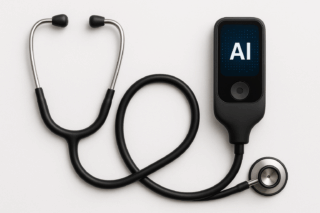Testing medical equipment is vital, but manual workflows slow hospitals down. OneQA from Fluke Biomedical helps healthcare teams automate safety testing, reduce errors, and save time while ensuring every device meets the highest standards of care.
By Mike Nguyen, Sr. Product Manager at Fluke Biomedical
In modern hospitals, biomedical engineers are under constant pressure to maintain high standards of safety and compliance while managing growing workloads. Electrical safety testing remains essential, but it’s increasingly time-consuming and fragmented. Every test, report, and audit trail must be precise, yet the manual processes behind them often create bottlenecks.
Workflow automation solutions like OneQA from Fluke Biomedical are changing this. By digitising, standardizing, and automating quality assurance (QA) processes, hospitals turn repetitive testing into a controlled, data-driven workflow that saves time, reduces errors, and helps strengthen patient safety.
The Shift Toward Automated Electrical Safety Testing
Electrical safety tests verify that critical equipment, from defibrillators to ventilators, operates within safe electrical limits. Historically, these tests required manual setup, note-taking, and data transfer. Each step introduced opportunities for human error and inconsistency.
OneQA removes much of this friction. It connects directly to Fluke Biomedical test instruments, such as the ESA600 and ESA700 Series for electrical safety, the Impulse 6000D and 7000DP for cardiac devices, and the VT650 and VT900A for ventilator and gas flow testing. Once connected, predefined test sequences run automatically, and results are securely recorded in real time.
The outcome is not only faster testing but also a more reliable and traceable record of every measurement. What once required multiple manual steps can now be completed in a single guided workflow.
Why Integration with CMMS Is Crucial
Most hospitals already rely on a Computerized Maintenance Management System (CMMS) to schedule preventive maintenance and track device history. However, QA testing has often remained disconnected from that digital ecosystem.
OneQA bridges that divide with an open API to integrate with several CMMS platforms to allow test data to flow automatically. The moment a test is complete, the CMMS is updated with current compliance information and linked reports. This integration eliminates redundant data entry, helps ensure audit readiness, and provides a live overview of device status across departments.
Beyond convenience, this connected data structure enhances decision-making. Managers can quickly see which devices are approaching compliance deadlines, where maintenance gaps exist, and how resources can be best allocated. Over time, this builds an evidence-based picture of equipment reliability and risk exposure, insights that support smarter capital planning.
Time, Cost, and Workforce Efficiency
Automation yields tangible gains. Hospitals adopting workflow automation for QA typically report testing cycle times, depending on equipment mix and protocols. Shorter test cycles mean less device downtime, fewer service interruptions, and greater availability of equipment for clinical use.
The paperwork reduction is equally valuable. When results and reports are auto-generated, technicians spend more time testing and less time documenting. Fewer manual entries mean fewer transcription errors and less need for re-testing, directly improving productivity and morale.
This also supports workforce sustainability. As experienced biomedical engineers retire, automated workflows and pre-built testing templates enable faster training for new staff. Visually guided steps within OneQA act as a digital mentorship, to help ensure procedures are followed correctly and consistently from day one.
Strengthening Compliance and Data Governance
Regulatory compliance in healthcare technology management (HTM) is non-negotiable. OneQA automatically creates timestamped reports aligned with global standards. Each record is stored securely, forming a verifiable audit trail that can be retrieved instantly during inspections.
But there’s a broader, less visible advantage: improved data governance. By centralising test records within an integrated system, hospitals reduce the risk of fragmented or lost documentation, a common issue in multi-department environments. This centralisation not only supports compliance but also enables analytics that can uncover trends in equipment performance or failure patterns.
Building a Unified Testing Culture
Automation does more than streamline processes; it unifies teams. When every department uses the same testing platform, procedures become standardized, and results are directly comparable. That uniformity fosters cross-department collaboration and transparency.
Technicians gain confidence in the data they share, and managers gain a consistent view of operational performance. In large health networks, this uniformity is invaluable for benchmarking and harmonising maintenance strategies across sites.
Beyond Compliance: A Smarter, More Resilient Hospital
While many see workflow automation as a tool for compliance, its long-term value lies in creating resilience. Automated QA systems reduce reliance on individual expertise, minimize operational risk, and provide a scalable foundation for predictive maintenance.
With accurate, connected data, hospitals can transition from reactive testing to proactive asset management, anticipating problems before they affect patient care. Combined with the reliability of analyzers by Fluke Biomedical OneQA turns electrical safety testing from a tedious chore into a strategic function that safeguards both equipment and efficiency.
In a healthcare landscape defined by limited resources and rising expectations, automation isn’t just about doing more with less; it’s about working smarter, safer, and with greater confidence in every test performed.











